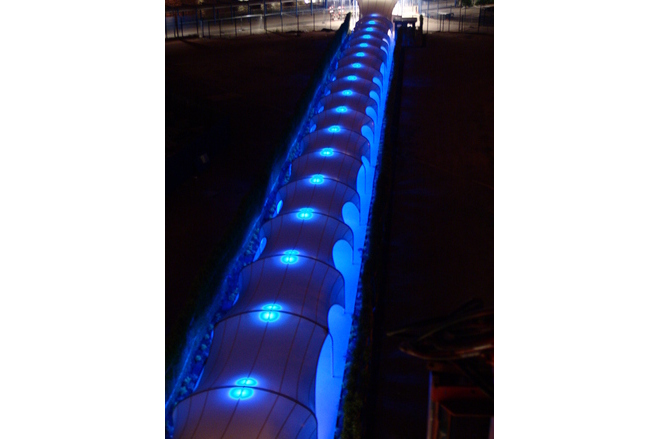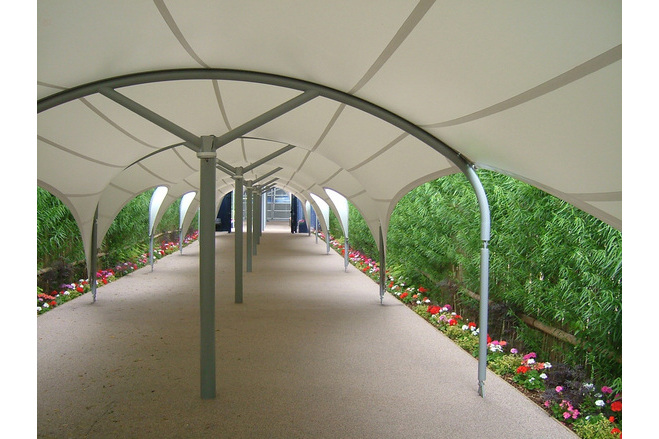02 Riverwalk
General information
-
Location address
London
-
Location country
United Kingdom
-
Year of construction
2007
-
Name of the client/building owner
AEG
-
Function of building
Shelters
-
Degree of enclosure
Open structure
-
Climatic zone
Temperate - cold winters and mild summers
-
Number of layers
mono-layer
-
Type of application of the membrane
covering
-
Primary function of the tensile structure
- Rain protection
- Sun protection
Description
Stretching around 150m, and leading from the bank side to the entrance of the entertainment centre, the walkway was designed to provide complete weather protection for the VIP guests.
Encased in a beautiful willow wall, designers Barr Gazetas intended the walkway to have as much privacy as possible to create an exclusive entrance. The symmetry and curvature of the fabric has elegance in its design and juxtaposes effectively with the more industrial design of the Dome.
A wow factor was also important to the client and though the walkway provided an impressive entrance, the addition of interactive lighting ensures a stunning arrival. Architen’s lighting division was tasked with the design and supply of an interactive lighting system that lights the walkway in an array of vibrant colours as the VIP visitor’s progress to their destination. Also included in Architen’s project was the refurbishment of the existing lighting which included the replacement of over a thousand light bulbs and extensive servicing control equipment.
Two additional inverted umbrella canopies located on the pontoon were also thrown into the Architen brief, as was the installation of a further three inverted cone canopies on the bank side on the canting bridge.
Fabric was an obvious choice for the designers. Not only does it provide a lightweight structure with graceful form, translucency and an aesthetically seamless interface between the existing listed fabric structure of the O2 dome and the inverted cone and umbrellas on the canting brow, it also ties in well with the natural surroundings and promotes the ethos of the Greenwich Peninsula which dates from the original days of the Millennium Dome.
The large spans at each end of the walkway were challenging but necessary in order to enable emergency access for vehicles. Integration with existing structures also made it an unusual project for our design team. As the pontoon moves up and down with the movement of the tide, the canopy had to be designed to move with it.
Description of the environmental conditions
Material of the cover
-
Cable-net/Fabric/Hybrid/Foil
Cable
-
Material Fabric/Foil
PVC - coated polyester fabric
Main dimensions and form
Duration of use
-
Temporary or permanent structure
Permanent
Involved companies
-
Architects
Barr Gazetas
-
Contractors
Architen Landrell Associates Ltd.




